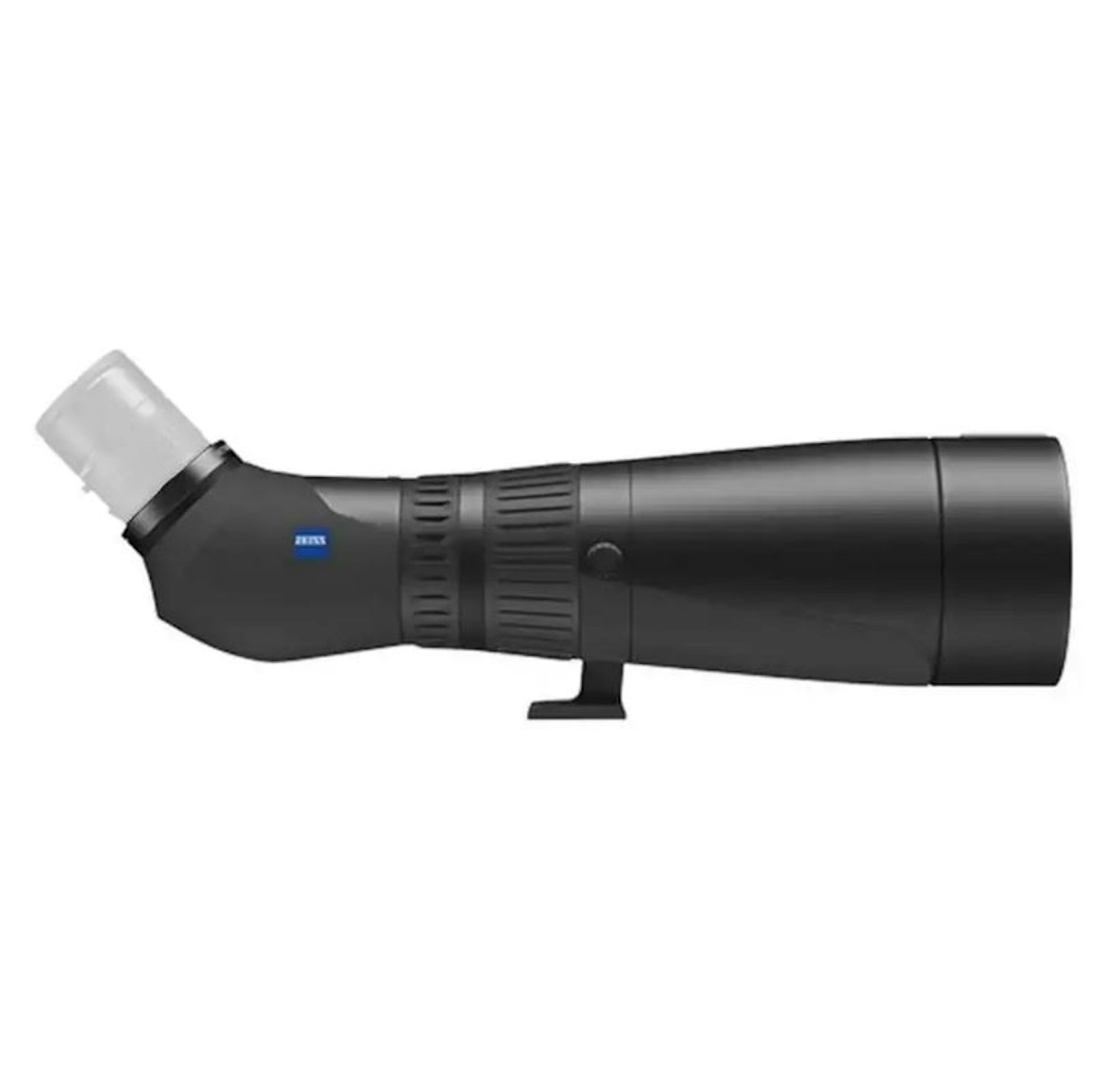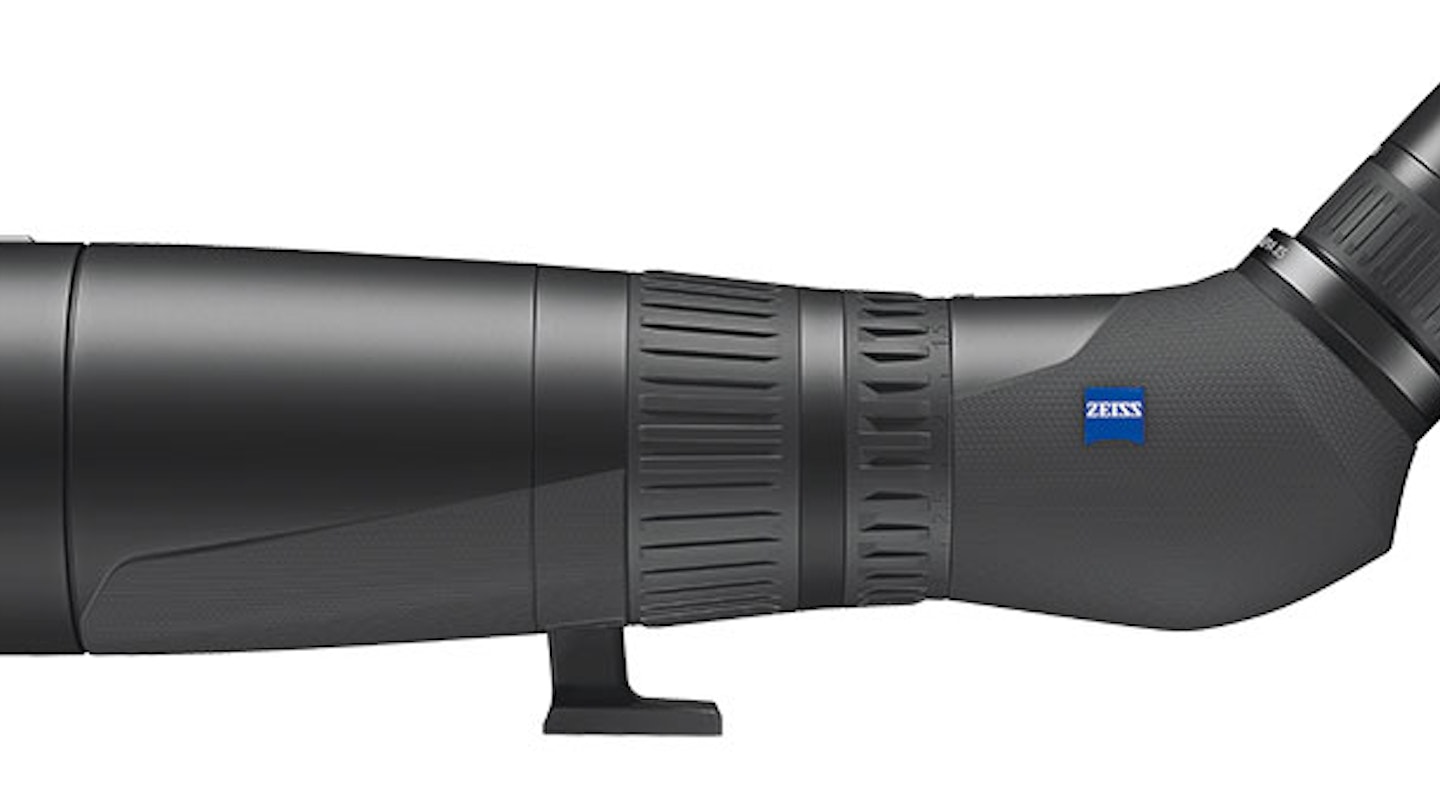They may look pretty much like many other scopes on the outside, but inside the Harpias are different. You need to look through them to really appreciate these high-end offerings. There are two Harpias – one with an 85mm objective, and one with a 95mm objective. Both are zooms and include the eyepiece. The 85 is a 22x-65x; the 95 a 23x-70x.
Unusually, the glass that does the zooming is in the objective, not the eyepiece. This means the eyepiece can be smaller and sit more comfortably near the eye. Zoom and focusing rings wrap around the barrel, with noticeable differences in resistance so you won’t mix them up. Here’s where it gets even more interesting.
When you zoom there’s no image tunnelling – no claustrophobic narrowing of the view. You need to try a Harpia and see this for yourself. The apparent field of view is a constant 72° – which is wide – all the way through the zoom range.

www.parkcameras.com
This makes it a bit easier to find the bird, and to see detail on flying birds – you’ll see more on a bird flying through the view than if you scan to follow it. You might want to try that – if your scope has a wide enough view.
The one focusing wheel delivers two focusing speeds. Handle it gently and the focus is fine. Move it quickly and it changes gear, enabling a more speedy switch from close to far. It’s good.
In use, you can scan at low power, then zoom in. The scope needs to be stable, you need to take care with the focusing, and atmospheric conditions need to be good, but these scopes can deliver very impressive images even at maximum magnification – that’s what they were designed to do.
For maximum stability twist the eyecup down and keep your eye a little away from the eyepiece. Then zoom in a bit, and then a bit more… The view of the Long-tailed Tyrant 400m away at 65x was excellent.
At 50m I could see feather level detail – the image was incredibly sharp. The Gray-cheeked Nunlet is a small Puffbird. It was 40m away in shaded forest. With the 95mm cranked up to a bit over 60x the view was stunning – I could see bristles around the base of its bill.
Aside from zoom range and objective size there are other differences between the two models. The 95 weighs 2.29kg. At 2.148kg the 85 is a little bit lighter. The big Harpia close-focuses to 4.5m.
Its smaller sibling shaves a metre off that, so if you watch insects with your scope this is the one you’ll want. The price? Around 3,900 Euros for the 95mm, and 3,500 for the 85mm. The scopes we played with were pre-production samples. Production Harpias should be available in the new year. They will be head-on competition for the best that are out there.
We did see a Harpy Eagle through the Harpia. It’s a massive, iconic bird with outrageously stout legs and a hind claw the size of a Grizzly Bear’s. More on that another time. Its scientific name is Harpia harpyja. That’s why we had to see one. I’m glad they didn’t call it Corvus. Thank you Zeiss.
ZEISS HARPIA FACTFILES:
-
Magnification: 22-65 (85mm) / 23-70 (95mm)
-
Field of view: 63.2-21m (85mm) / 58.8-19.5m (95mm)
-
Close focus: 3.5m (85mm) / 4.5m (95mm)
-
Weight: 1934g (85mm) / 2078g (95mm)
-
RRP: £2,995 (85mm) / £3,395 (95mm)
